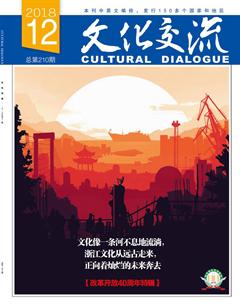我们走过40年
胡坚
文化是一个地方的根和魂,社会进步,经济发展,人的素质提升,都离不开文化的基础作用和推动作用。
浙江自古就是富庶之地,是一方历史悠久、人文荟萃、充满活力的沃土。改革开放40年,浙江的文化建设伴随着历史的进程走过了不平凡的历程。
文化为改革开放注入灵魂
改革开放40年,文化为改革开放奠定了思想基础、精神动力、人文底蕴和发展活力,也为自己创造了新的历史辉煌。
1978年,中国共产党的十一届三中全会开启了改革开放之路,思想、精神和文化走在了时代的前列。
拨乱反正理念的确立和思想的大解放突破了人们的思想禁区,浙江人民以新的巨大热情和无穷创造力,大力推进中国特色社会主义事业的发展,也推进新时期的文化建设。
浙江在全国率先恢复建立浙江省群众艺术馆,各地市级群众艺术馆、县级文化馆和乡镇文化站也相继恢复建立。1984年,浙江省成为在全国最早启动文化站建设的省份之一,将乡镇、街道文化站确定为全民所有制文化事业单位。1978年,全省共有乡镇文化站1049个、文化馆76个、公共图书馆63个、博物馆19家;到了1987年,全省乡镇文化站发展到3526个、文化馆93个、公共图书馆80个、博物馆40家。同时,文化产业开始起步,音像业、娱乐业相继进入市场,录像放映厅、歌厅、舞厅、音乐茶座等大众参与型的新的娱乐方式相继面世,成为广大群众追求的文化新时尚。
1992年,邓小平同志南方谈话的发表,为浙江文化事业的繁荣和文化市场的发展开辟了广阔空间。1992年,全省文化经营单位达12177家,至1993年仅一年时间即增至21252家,增长74.5%。1992年12月,在文化部第二届“群星奖”评选活动中,浙江省共获10块奖牌,居全国首位。从此,浙江省文化建设步入快速发展的历史时期。
从文化大省到文化强省再到文化浙江
1999年,浙江省首次提出实施“文化大省”战略,打开了浙江文化发展的新篇章。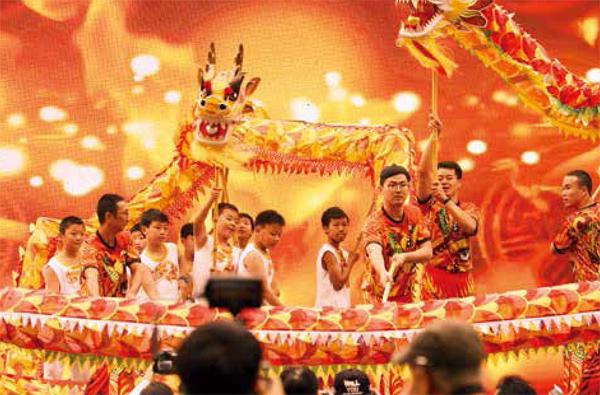
2000年12月,浙江省委通过的《浙江省建设文化大省纲要(2001-2020)》提出:建设文化大省是浙江面向新世纪,全面推进社会主义现代化建设的一项宏大系统工程,是代表先进文化前进方向,建设有中国特色社会主义文化的重大战略举措。2001年,浙江出台了《关于建设文化大省的若干文化经济政策》。2002年,召开全省文化工作会议,制定了《关于深化文化体制改革,加快文化产业发展的若干意见》,为浙江新一轮的发展奠定了良好的文化基础。
2003年6月,浙江被确定为全国文化体制改革两个综合试点省份之一。特别是习近平同志在担任浙江省委书记时提出的“八八战略”中,把人文优势作为推进浙江发展的一个关键因素:“进一步发挥浙江的人文优势,积极推进科教兴省、人才强省,加快建设文化大省。”充分认识文化优势对浙江发展的重大作用,把文化建设放在浙江全面发展中进行系统部署,标志着对文化的认识达到一种崭新的高度。
2005年7月,浙江省委十一届八次全会通过《中共浙江省委关于加快建设文化大省的决定》。这是浙江文化发展中的一个里程碑。《决定》强调,重点实施文明素质工程、文化精品工程、文化研究工程、文化保护工程、文化产业促进工程、文化阵地工程、文化传播工程、文化人才工程等“八项工程”,使浙江成为全民素质优良、社会文明进步、文化事业繁荣、文化产业发达、教育科技文化卫生体育事业主要发展指标全国领先的文化大省。
2006年2月,浙江省人民政府制定出台《浙江省文化建设“四个一批”规划(2005—2010)》,强调要建设一批重点文化设施,发展一批重点文化产业,培育一批重点文化产业区块,壮大一批重点文化企业。
2008年6月,浙江省委召开工作会议,提出了《浙江省推动文化大发展大繁荣纲要(2008—2012)》,强调要着力打造三大体系:建设社会主义核心价值体系、公共文化服务体系和文化产业发展体系。
2011年11月18日,浙江省委十二届十次全会通过了《中共浙江省委关于认真贯彻党的十七届六中全会精神,大力推进文化强省建设的决定》,提出要重点实施中国特色社会主义理论体系普及计划、公民道德养成计划、文艺精品打造计划、网络文化和现代媒体建设计划、重大文化设施建设计划、基本公共文化服务提升计划、文化遗产传承计划、文化产业倍增计划、对外文化拓展计划、文化名家造就计划等“十大计划”,动员全省人民把浙江建设成为人文精神高尚、文化事业繁荣、文化产业发达、文化氛围浓郁、文化形象鲜明的文化强省。浙江的文化建设跃上一个新台阶。“文化强省”建设的6个年头,浙江的文化建设与发展取得了全面的成就,文化的創造力、影响力、传播力和推动力达到了新的水平。
2017年6月19日,浙江省第十四次党代会隆重召开,进一步提出建设“文化浙江”的新的宏伟目标:“在提升文化软实力上更进一步、更快一步,努力建设文化浙江。”实现文化自信进一步坚定,中国梦和社会主义核心价值观深入人心,红船精神、浙江精神广泛弘扬,优秀传统文化得到有效保护和传承,公共文化服务体系更加完善,文化产业成为万亿级产业,人民精神文化生活更加丰富,公民文明素质和社会文明程度明显提高,文化创造力传播力影响力显著增强。中共浙江省委、浙江省人民政府颁布了《关于推进文化浙江建设的意见》,强调要把浙江建设成为公民素质优良、社会文明进步的示范区,文化事业繁荣、文化产业发达、文化名家荟萃、文化氛围浓郁、文化印记鲜明的文化发展先行区,成为在全国具有重要影响的文化高地、文明高地。
党的十九大以来,浙江人民以各种途径和方式推进“文化浙江”建设的实践。为了深入贯彻党中央提出的优秀传统文化的保护与传承工作,浙江省委办公厅、省政府办公厅印发《浙江省实施中华优秀传统文化传承发展工程工作方案》;为了早日将文化产业打造成八大万亿产业之一,浙江省委、省政府发布了《关于加快把文化产业打造成为万亿级产业的意见》,提出要实施八大重点产业计划。
浙江文化的繁荣与成就
改革开放40年来,浙江文化迎来了历史性的繁荣兴盛的新时代,浙江人民的思想观念、精神状态、道德修养得到极大的提高,公共文化服务体系空前完善,人民群众的文化生活越来越丰富多彩,文化产业进入全国第一梯队,优秀传统文化得到了大力的弘扬。40年的繁荣可圈可点,40年的成就不胜枚举。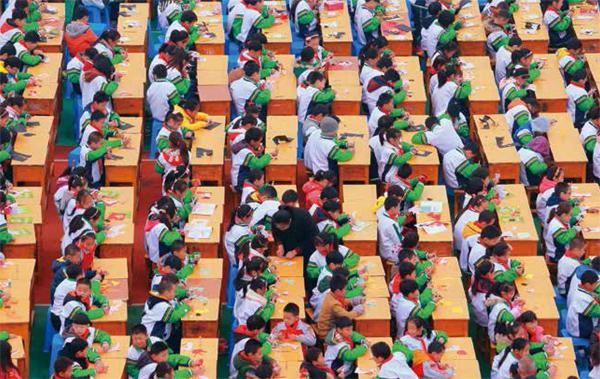
深入总结浙江改革开放取得伟大成就的精神密码,总结提炼出浙江精神:“自强不息、坚韧不拔、勇于创新、讲求实效、求真务实、诚信和谐、开放图强。”浙江精神极大地调动和激发了全省人民建设社会主义现代化的积极性、主动性和创造性,为推动浙江发展提供了不竭动力和精神源泉,鼓舞着一代又一代浙江人投身改革开放和创业创新,干在实处永无止境,走在前列要谋新篇,勇立潮头方显担当。
大力推进思想道德与精神文明建设,促进人的全面发展。总结提炼出当代浙江人的共同价值观:务实、守信、崇学、向善,浙江人民有了更加鲜明的行为标尺。着力培育和践行社会主义核心价值观,以诚信教育、友善教育、勤俭教育、孝敬教育等主题实践活动为切入点,推动社会主义核心价值观内化为人们的精神追求,外化为人们的自觉行动。把深化“最美浙江人”主题活动作为培育和践行社会主义核心价值观的品牌载体,“最美”现象真正由“风景”成长为“风尚”。
满足人民过上美好生活的新期待,公共文化服务和文化事业蓬勃发展。实现文化设施、文化服务、文化活动全省覆盖,做到城乡一体化、服务均等化,使广大群众能够方便快捷地享受到优质的公共文化服务。建成了公共文化服务的软、硬件建设相互配套,文化服务门类齐全,服务机制科学有效的公共文化服务体系。形成了长效的运作机制,完善相关的政策法规,在全国率先建成比较完备的公共文化服务体系。
创新农村公共文化服务,创造性地建设农村文化礼堂,打造农民的精神家园。近几年来,农村文化礼堂建设都作为每年浙江省政府操办的十件民生实事之一,在这种强有力的推动下,农村文化礼堂建设规模不断扩大,内涵不断丰富,效益不断显现。目前全省已經建成1万多座农村文化礼堂,成为浙江农村一道亮丽的风景线。
文化产业成为浙江综合竞争力的重要组成部分,成为推进浙江文化发展的重要突破口,也成为浙江经济发展的重要增长点。2016年浙江省文化及相关特色产业增加值3232.98亿元,占GDP6.84%。在“中国省市文化产业发展综合指数”和生产力指数中居全国第四位,影响力指数居第三位。
改革开放为浙江文艺的繁荣发展提供了强大动力。大力推进文艺创作繁荣发展,浙江打造了许多浙产的精品力作,影视动漫、新闻出版、数字阅读、网络文学、文艺演出、群众艺术等均走在全国前列,具有很高的知名度。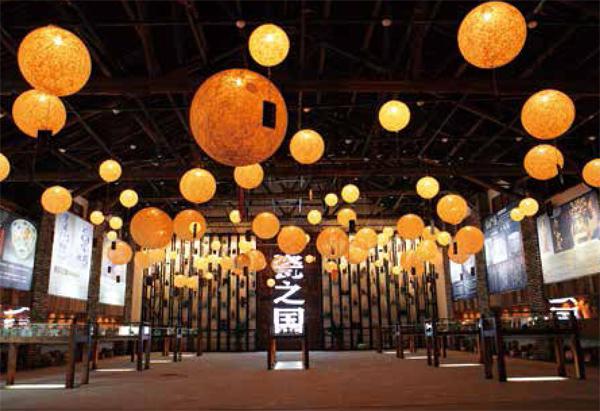
采取了一系列重大举措加强文化遗产保护,推进传统文化的传承。深入实施优秀传统文化传承发展工程,文化与自然遗产、历史文化风貌保护力度不断加大,挖掘传承地方特色文化,推进优秀传统文化创造性转化和创新性发展,让优秀传统文化活起来、传下去,进一步延续浙江文脉。国家文化主管部门认定了五批共3068名国家级非遗代表性传承人,我省以196人的入选人数位居总数第一。入选的全国非物质文化遗产项目,浙江省连续4次入选项目数量保持全国第一,实现四连冠,总计入选217项。还有1076项省级非遗项目,位居全国各省区市之首,构筑起一座璀璨夺目的浙江文化宝库。
哲学社会科学不断繁荣。浙江省是全国第一个制定了省级社会科学发展规划的省份,即《浙江省哲学社会科学“十一五”发展规划》,在研究浙江现象、总结浙江经验、提炼浙江精神方面,取得了创造性成果。在基础理论、应用理论、对策研究等各个方面取得了重大成就,形成了浙江哲学社会科学发展的宝贵经验。
文化像一条河不息地流淌,浙江文化从远古走来,正向着灿烂的未来奔去。40年是其中辉煌的一瞬,前方将更加绚丽多彩。
(作者系浙江省钱塘江文化研究会会长)
40 Years of Cultural Development in Zhejiang
By Hu Jian
Culture is the soul and foundation of Zhejiang. Culture is an indispensible factor in economic prosperity, societal progress, human happiness, professionalism as seen in Zhejiang in the past 40 years.
Zhejiang has a long history of culture and prosperity. In the 40 years of reform and opening up to the outside world, Zhejiang in eastern China has witnessed an unusual cultural development.
Culture: Soul of Reform and Opening
Up to the Outside World
The year 1978 saw China set out on an arduous journey of reform and opening up to the outside world as the result of the 3rd plenary session of the 11th central committee of the Communist Party of China. Breaking away from incorrect thinking, people of Zhejiang put soul and heart into economic and cultural development.
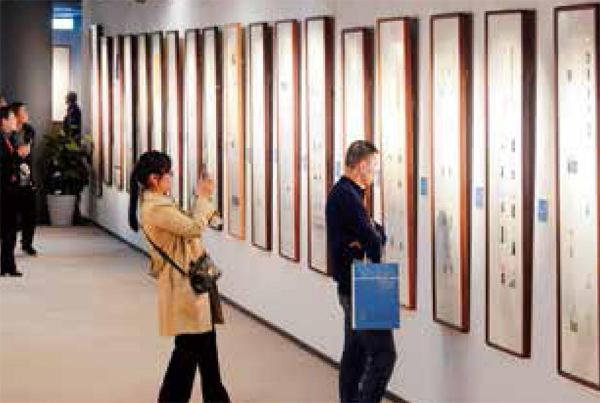
Zhejiang led China in bringing back the provincial cultural center. Pretty soon, cultural centers all levels came back. In 1987, the province had 3,526 cultural centers at rural township and 93 cultural centers at county and prefectural levels, 80 public libraries, and 40 museums. The cultural industry began to boom and new types of entertainment such as video houses, dance halls, song halls and music teahouses mushroomed.
The year 1992 saw Deng Xiaopings inspection in the south of China, which marked a turning point in the course of Chinas modernization drive as well as a turning point in the history of cultural development in Zhejiang. In 1992, Zhejiang had 12,177 businesses engaged in entertainment market. In 1993, the number jumped to 21,252, showing an increase of 74.5%. In December 2, 1992, Zhejiang received 10 medals in a national competition hosted by the Ministry of Culture, again leading the country in the number of the medals.
Zhejiang: Blueprints and Decisions
for Cultural Undertakings
What Zhejiang has achieved in the prosperity of its cultural undertakings is resulted from a series of key strategies and policies formulated and implemented over years.
In 1999, the province launched a strategy of building up the provinces cultural industry. It was a historical strategy.
In December 2000, the provincial government adopted an ambitious blueprint for cultural growth.
In 2001, a suite of preferential policies was launched to put the blueprint into practice. In the following years, more policies and decisions were put forward to push the provinces cultural growth.
In June 2003, Zhejiang was approved to be one of the two pilot provinces in the country for carrying out the restructuring of cultural administration and system. In the “Eight-Eight Strategies” put forward by Xi Jinping, then chief of CPC Zhejiang Committee, culture was considered a key factor for the general development of the province.
In July 2005, the 8th plenary session of the provincial CPC committee adopted a decision on accelerating the cultural growth of the province. The decision listed eight projects in the hope of consolidating cultural resources and promoting cultural undertakings in a comprehensive way.
In February 2006, the provincial government launched a six-year development guideline listing key cultural facilities, sectors, cultural industrial zones and businesses.
In June 2008, the CPC Zhejiang committee announced a work plan for the provinces cultural development from 2008 to 2012. The plan focused on three systems: promoting the socialist core values, promoting a public cultural service system and promoting the development of cultural industries.
In November 2011, another key strategy was adopted to further promote cultural undertakings across the province. The new decision launched ten key projects and vowed to build Zhejiang into a powerhouse of cultural undertakings. June 2017 saw the 14th provincial congress of the CPC, which launched comprehensive measures.
After the 19th National Congress of the CPC in 2017, the provincial government issued a work plan to further safeguard cultural traditions. The government also issued a guideline on measures to be taken so that the cultural industry could reach a sales threshold of 1 trillion yuan per year.
Zhejiang: Cultural Prosperity
Over the past 40 years, culture has played a crucial part in the provinces modernization. In the final analysis, it is culture that positions Zhejiang as a pace-setter in the countrys reform and opening up to the outside world. Right now, cultural facilities and services are abundant, supported and guided by a system of policies, law, and government administration. In rural areas, village cultural centers are a top priority over the past few years of the provincial government. The cultural industry is now a key part of the comprehensive competence and contributed 323.298 billion yuan, or 6.84%, to the provinces GDP in 2017.
Zhejiang is Chinas leading producer of films, television dramas, press and publishing, digital reading, internet novels, mass market entertainment and recreations.
Zhejiang is a national leader in safeguarding tangible and intangible cultural heritage. By 2018, Zhejiang has 196 national inheritors, presenting the biggest percentage of the 3068 inheritors named by the central government. For four consecutive years, Zhejiang has been leading the country in having the biggest number of intangible cultural heritage items on the national lists. The province also leads the country in having the biggest number of provincial intangible cultural heritage items, that is, 1076, at the provincial level.
In philosophy studies and social sciences, Zhejiang leads the country in many ways. Zhejiang was the first province in the country that formulated a development plan for promoting philosophy and social sciences for the 11th Five-Year Plan period. The projects launched in this field have examined the province in many ways, yielding a great number of policies, strategies, decisions, and practices.
(The author is director of Zhejiang Association of Cultural Studies of the Qiantang River.)

